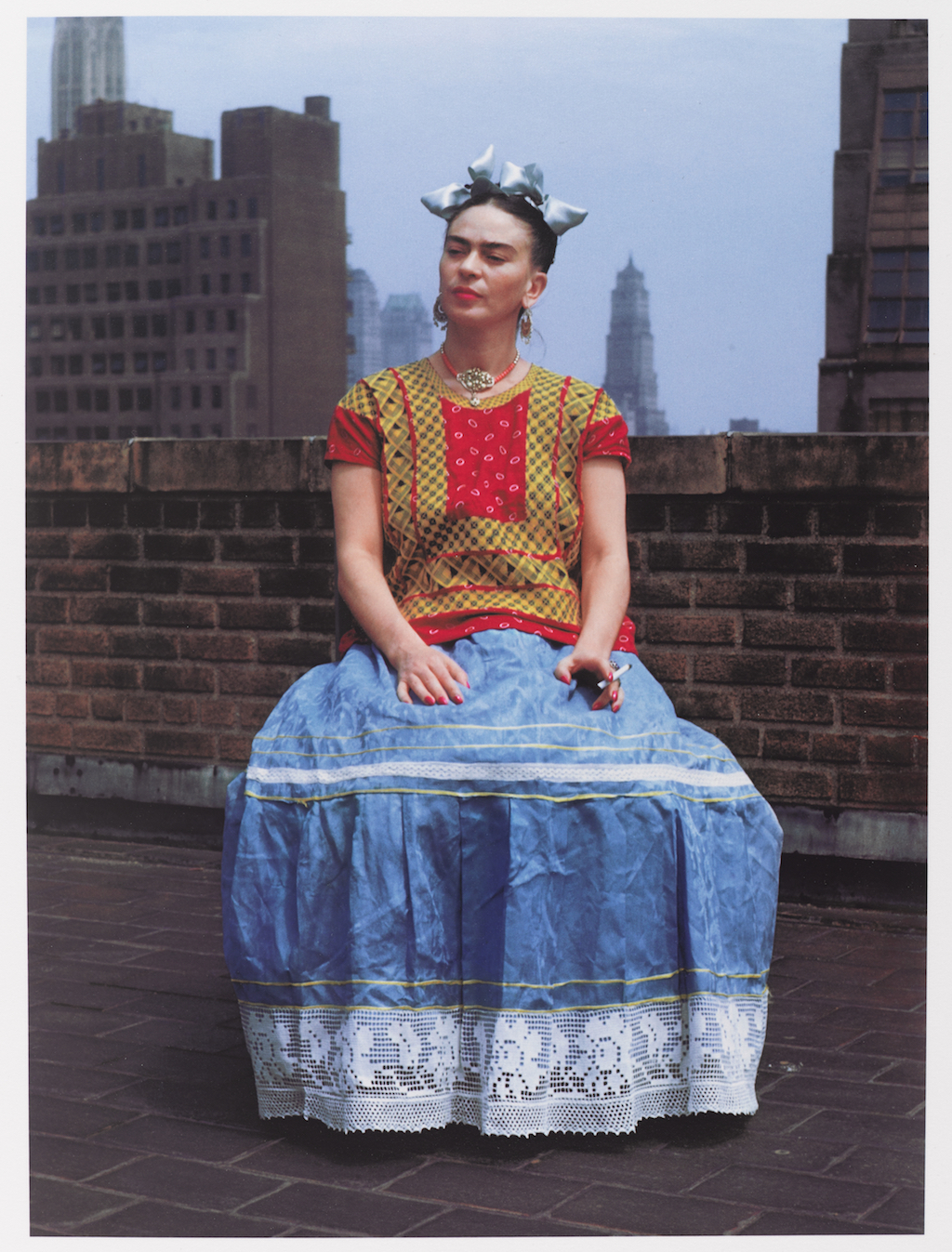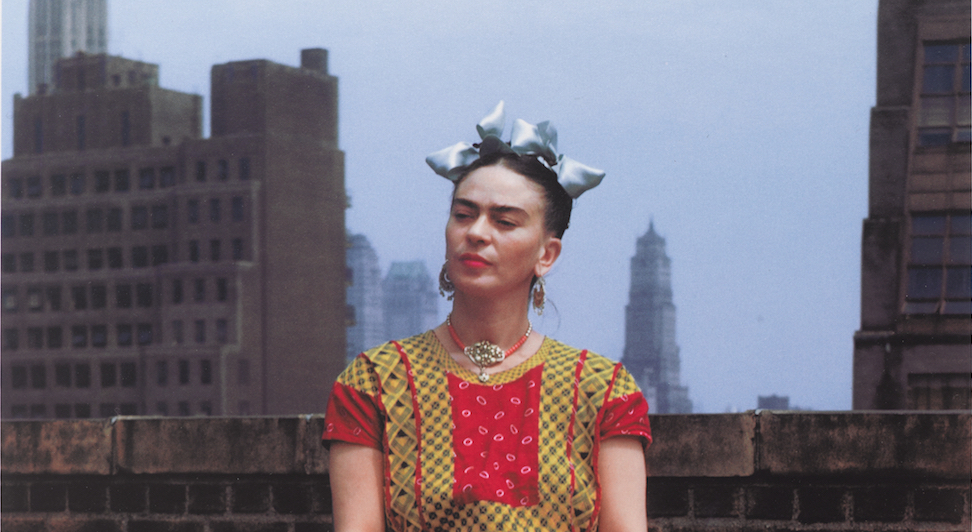[ad_1]

Nickolas Muray, Frida in New York, 1946/2006, carbon pigment print.
©NICKOLAS MURAY/PHOTO: BROOKLYN MUSEUM/BROOKLYN MUSEUM, EMILY WINTHROP MILES FUND
With a new show at the Brooklyn Museum devoted to Frida Kahlo, we are republishing a column by the critic Anita Brenner that addressed the Mexican art scene in 1953. Originally in the Summer 1953 issue of ARTnews, the column includes musings on Rufino Tamayo, Diego Rivera, and Kahlo, whose work was surveyed that year at Lola Alvarez Bravo’s Galeria in Mexico City. Brenner describes the opening for the exhibition, for which the artist arrived on a stretcher. “The show became more a court affair than a normal opening,” Brenner writes. Her column follows below. —Alex Greenberger
“Summer in Mexico”
By Anita Brenner
Summer 1953
Mexican art today is sharply divided into two schools and two sets of values. They can be defined as fellow-traveler-nationalistic and art-for-art’s-sake. The latter includes humanists, conformist and decoratives. The older school, which once called for a search and reaffirmation of all that is plastically and emotionally native, this being the spirit of the Mexican Revolution, has become shot through with demagogy and bogged down with academicism.
Riveran Aztec
The liveliest development in it, the only thing which is really new, is to be found in architecture, where Diego Rivera’s influence has been indirect but very great. His fabulous project of a pyramid, to live and work and be buried in (along with choice friends), as well as the remodeling of his own house in the mood of Aztec aesthetic, set the architects off in that direction. At University City, an incredible place both in size and variety of experimentation, the outstanding job is the stadium, which follows Rivera’s example of re-statement, in modern terms, of the pre-Conquest past.
It is a huge place built of concrete combined with lava-rock used the same way as in the pyramids, but following a pure and perfect functional line. The outside is projected to be decorated in miles of bas-relief done in mosaic, designed by Rivera. Its execution has gone on under his direction, in an amusing pre-Conquest way. He has a corps of mathematicians and other experts, to calculate distortion and enlargements from the original drawings. And another corps of assistants carry them out. But Rivera stands on a ladder at a strategic distance, with a long bamboo pole in his hand, pointing to this stone and that as the workers set it, instructing them to raise, lower, project or insert.
Kahlo, Tamayo
Among gallery exhibitions, those directly or indirectly connected with the government follow mainly the older school, which has long been somewhat the “official” style, and whose policy tends to exclusion of foreign art and exaltation, in an almost religious way, of everything native. The most interesting of this group was an exhibition of provincial painters, in Guadalajara, embracing three centuries of Jalisco art. This was done under the direction of Lola Alvarez Bravo, who opened a branch gallery in Guadalajara, next door to the museum.
In her Mexico City gallery, the high point of Miss Bravo’s season was a partial retrospective of the work of Frida Kahlo. It was a very special event in some respects. The artist was brought in on a stretcher and installed in her bed, a famous four-poster with a mirror set inside the canopy. The show became more a court affair than a normal opening. As a result, critics tended to react in a hostile way, as if they resented the atmosphere of incense and awe. Actually Frida, who has been extremely ill, is extraordinarily courageous about continuing her work under conditions that might have destroyed anybody with less admirable toughness. The exhibition, enlarged into a true retrospective, will be the main event of the summer season at the National Institute of Fine Arts (Bellas Arte Palace), in July.
The non-nationalistic, pure-art tendency in Mexico is unofficially headed by Rufino Tamayo. He has become a figure of controversy without intending or wanting to, because what he has done simply has been stubbornly to paint as he wants, rejecting all political allegiance. This has been the case in his life, also. He is a very solitary person, respected for his integrity by many more than he realizes, and rather sad at the public that sniping that goes on from the other side, accusing him of being an artistic traitor to his country, and a bourgeois besides.
Tamayo has just finished two large murals that frame the lobby of the Fine Arts Palace from the corridor of the second floor. Technically it was a considerable feat. The corridor is extremely narrow and there was no way for the artist to stand off and look at his job; once he was nearly killed trying to. The painting is top-quality Tamayo.
Climent and Bartoli
At the Galeria de Arte Mexicano, where Inez Amor follows a policy judiciously neither one school nor the other, concentrating on superior painting as such, the most interesting show of her season was the work of Enrique Climent, a Spanish refugee. Climent was a conventional painter of still-lifes, technically very careful, and with a nice taste in color, until he visited New York a few years ago. He suddenly shifted to experiment, going first to Cubism, à la Braque. He has now found a métier in decorative painting in the tradition of Klee. His color, pleasant to glowing, works out very well to please the eye and his execution is fairly flawless. The frames Inez included, to box in and yet continue the color, make an agreeable finishing touch.
At the Galeria Prisse, whose development has been interesting to watch, the outstanding show was Bartoli’s. Prisse is run by painters, co-operatively, and is not commercial; in fact it is anti-commercial. They choose mostly what is new, young, original—setting a high standard, professionally, for the newcomers. The leader of this group is Vlady, whose works have been mentioned in these pages before.
What was news about Bartoli, well known, of course, for his witty and virtuoso magazine drawings, was his debut as a painter, in watercolors, tempera and oils. He exhibited fifteen of them: tender in color, and often wistful and nostalgic in mood. Technically experimental, tentative, achieving their effect by understatement and indirection, they have a lovely quality and a recurring motif of doors opened into vistas and yet more lighted space.
Prisse also exhibited the work of a Spanish “primitive,” Tortosa, who started painting at the age of sixty-three compared, of course, to Grandma Moses, and inevitably to Rousseau, also. Actually he is more childlike than either, both in technique and conception. His clouds are like ice-cream and little lambs, meticulously outlined. In spirit, he is an ingenuous man, an anarchist of the very old-fashioned type, who follows the sweetness and light, “love humanity and all will be will,” teachings of the other Rousseau. Most of his pieces are landscapes. When he does figures, they are, as a rule, children having fun. Julian Huxley, who saw his work here some years ago, called it “extraordinary.” To us, the man himself is more so.
[ad_2]
Source link

